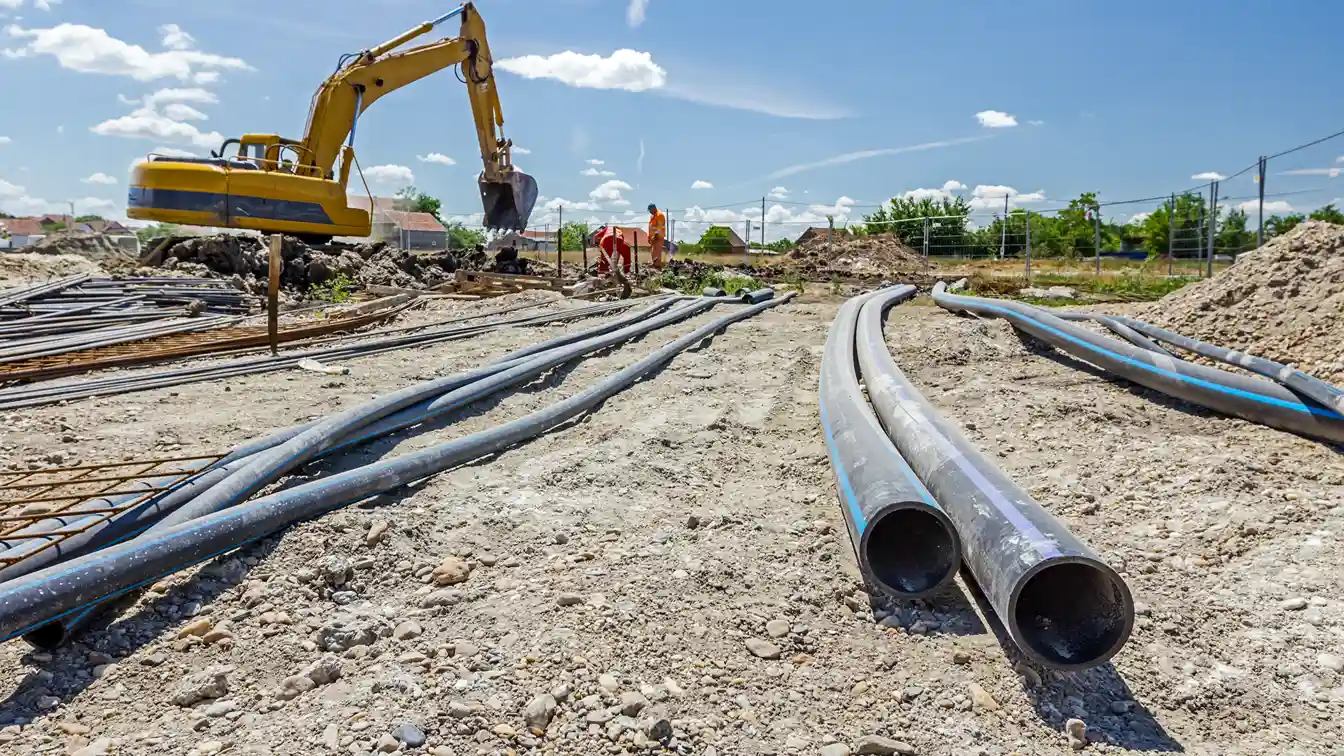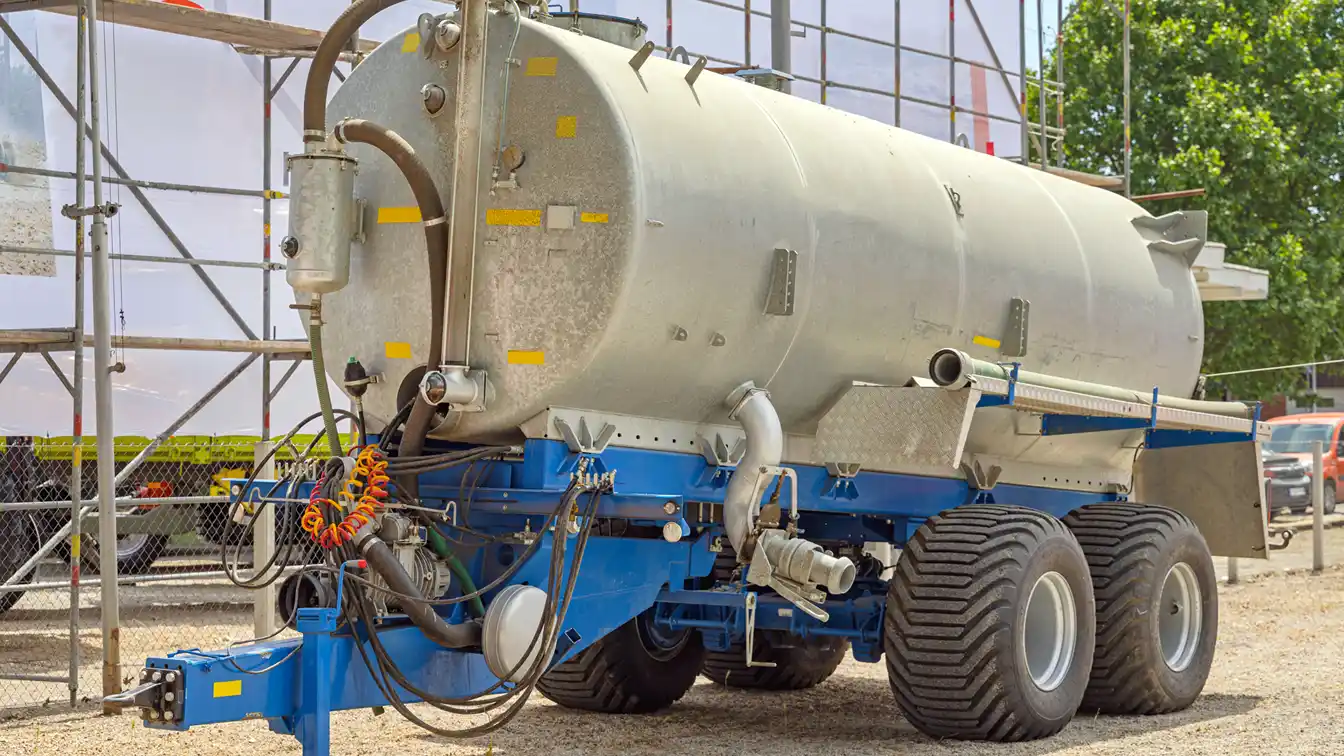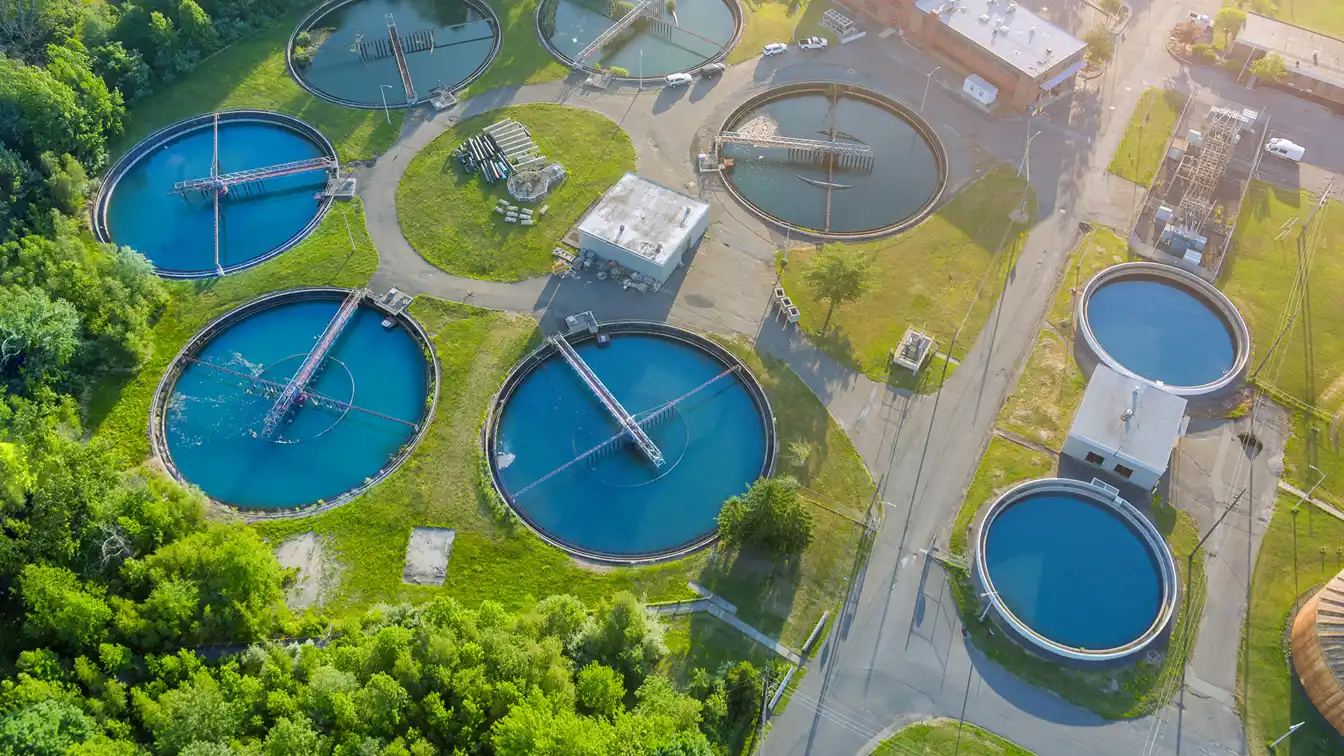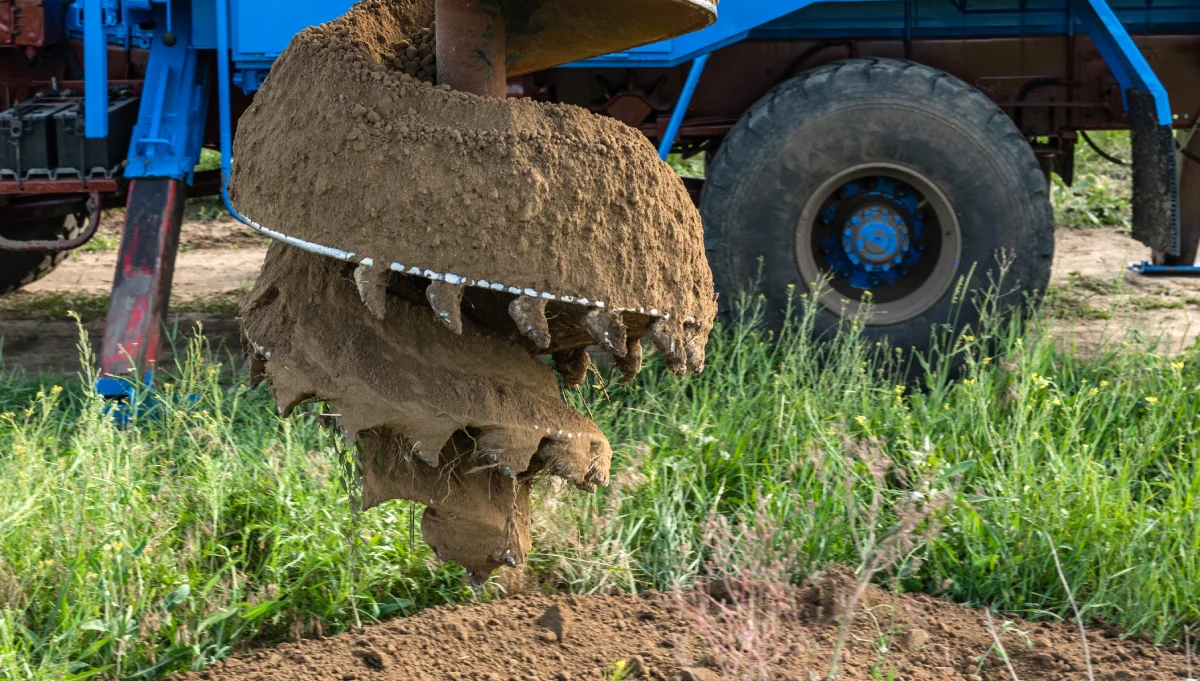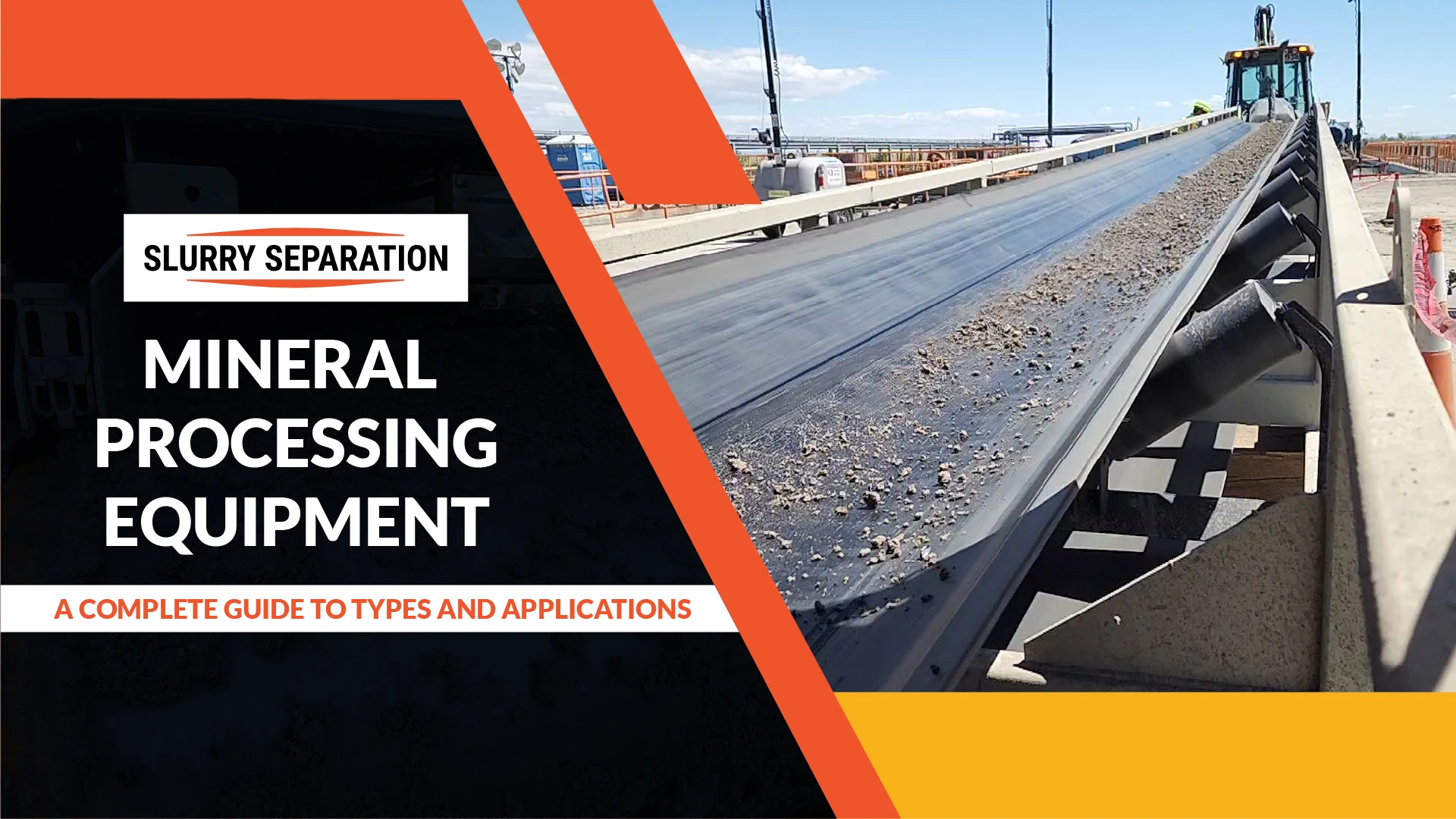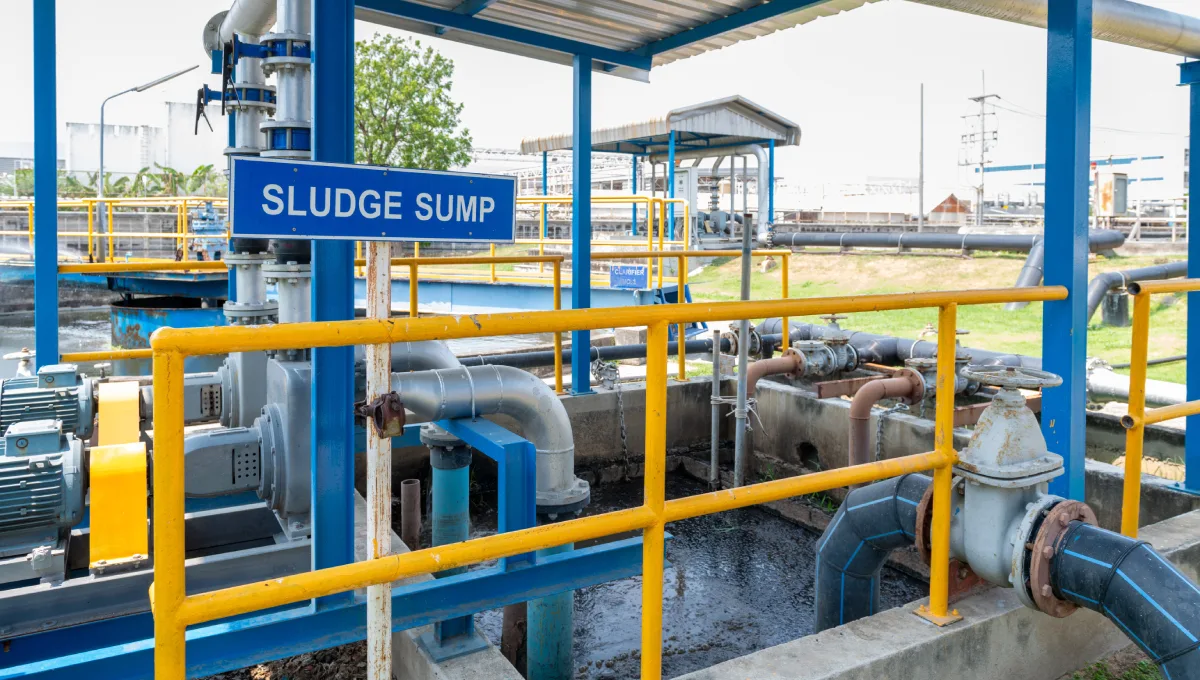- Pioneering Slurry Management: The Cutting-Edge Technology of Slurry Separation:
- Slurry Pumps: The Heart of the Slurry System:
- Deployment of Slurry Pipes and Pits: Essential Components for Efficient Slurry Management:
- The Importance of Slurry Tanks:
- Practical Applications of Slurry Systems:
- Innovations and Future Directions in Slurry Technology:
- Conclusion:
Pioneering Slurry Management: The Cutting-Edge Technology of Slurry Separation:
Managing and processing slurry is paramount for operational efficiency and ecological sustainability in construction and environmental management. Slurry Separation, a pioneer in crafting and advancing slurry processing equipment, is in charge of this pivotal sector. Esteemed for its groundbreaking solutions, such as shale shakers, centrifuges, and holistic slurry separation systems, Slurry Separation aids diverse industries in effectively managing and recycling slurry, a common byproduct of numerous construction and manufacturing activities.
Slurry Systems: The Backbone of Industrial Processes
Slurry, a mixture of solid particles and a liquid, usually water, plays a pivotal role in many industries, including mining, construction, and environmental remediation. Slurry walls—barriers constructed in the ground using slurry to prevent water flow—are fundamental in projects requiring deep excavations. Similarly, in the mining sector, slurry pumps facilitate the transportation of mined materials mixed with water from one location to another, emphasizing the necessity of effective slurry management systems.
Core Components of Slurry Management: Pumps, Pipes, Pits, and Tanks
The efficiency of a slurry management system hinges on several key components:
- Slurry Pumps: These are essential for moving the slurry from the point of creation to the processing or disposal site. Slurry pumps are designed to handle a high concentration of solids, providing the necessary force to propel the slurry through pipelines.
- Slurry Pipes: These are specially designed to resist wear and corrosion caused by the abrasive nature of slurry. The durability and integrity of slurry pipes are vital to maintain the flow and prevent leaks or breaches that could lead to environmental contamination.
- Slurry Pits: Often, the initial collection points in a slurry system, these pits allow for the temporary storage of slurry before it is pumped out for treatment or disposal. Properly designed slurry pits are crucial for effective sedimentation and separation processes.
- Slurry Tanks: These serve as containers for the slurry during various stages of the separation process. They must be robust enough to handle the slurry’s abrasive and sometimes corrosive properties while facilitating easy access for monitoring and maintenance.
By leveraging advanced technologies and robust design principles, Slurry Separation provides the tools and systems necessary to manage slurry effectively across different sectors. As industries seek more environmentally friendly and efficient processes, sophisticated slurry management systems become increasingly essential, underscoring Slurry Separation’s contributions to industrial sustainability and operational efficiency.
Slurry Pumps: The Heart of the Slurry System:
Slurry pumps are critical in managing slurry in various industrial applications, from mining and dredging to construction and waste management. They are specially designed to handle abrasive solids mixed with fluids and are pivotal in the efficient operation of slurry systems. This section explores the intricacies of slurry pumps, focusing on different types, operational principles, and guidelines for selecting the right pump for specific applications.
Types of Slurry Pumps
Slurry pumps come in various designs, each suited to different tasks and slurry types. The choice of pump depends mainly on the slurry’s characteristics, such as particle size, concentration, the nature of the solids, and the specific requirements of the process or application.
-
Centrifugal Slurry Pumps:
The most common type of pump uses centrifugal force to move slurry through the pumping system. It is particularly effective for quickly moving large volumes of slurry and is generally more cost-effective for initial investment and maintenance.
-
Positive Displacement Slurry Pumps:
These pumps move a fixed amount of slurry through the system with each stroke or rotation, making them ideal for applications requiring precise flow control and for handling slurry containing highly viscous fluids or larger solid particles.
-
Submersible Slurry Pumps:
These are designed to be submerged in the slurry pit or tank and are typically used for pumping highly abrasive or dense slurry. They reduce the need for complex sealing or cooling systems that above-ground pumps might require.
These are typically small to medium-sized pumps used in light to moderate slurry applications. Despite their relatively small size, 4hp slurry pumps, for example, can be highly effective in small-scale construction, minor dredging operations, or agricultural tasks where slurry handling is required but not on an industrial scale.
Operational Principles and Benefits of Non-Clog Slurry Pumps
Non-clog slurry pumps are designed to handle fluids containing solids without clogging, making them ideal for applications with large particles or a high concentration of solids. These pumps are engineered with large, open impellers and robust construction to resist abrasion and reduce maintenance needs.
Benefits of using non-clog slurry pumps include:
- Reduced Downtime: The non-clog feature minimizes blockages in the pump, leading to fewer interruptions and less downtime for cleaning and maintenance.
- Increased Efficiency: By effectively handling solids without clogging, these pumps maintain a consistent flow rate, improving the overall efficiency of the slurry system.
- Extended Lifespan: Non-clog pumps are typically built to withstand harsh conditions, which can prolong their operational lifespan compared to standard pumps.
Application-Specific Guidelines for Selecting Slurry Pumps
Selecting the right slurry pump ensures efficient system operation and longevity. Here are some guidelines to consider when choosing a slurry pump for specific applications:
- Understand the Slurry Characteristics: Knowing the slurry’s composition, particle size, and concentration is crucial. A pump with a robust design and wear-resistant materials is necessary for abrasive and high-density slurries.
- Consider the Pumping Environment: Environmental factors such as corrosive substances or extreme temperatures can influence the choice of pump materials and design.
- Determine the Required Flow Rate and Pressure: The desired output in terms of flow rate and pressure will help determine the size and power of the pump needed.
- Compatibility with Existing Systems: Ensure the pump is compatible with existing pipes, pits, and tanks to facilitate seamless integration into the slurry system.
By adhering to these guidelines, industries can optimize their slurry management systems, ensuring that the pumps operate efficiently and reliably under the demanding conditions typical of slurry applications. The role of slurry pumps, especially models like the 4hp pumps, is undeniably central to maintaining the operational continuity and efficiency of industries reliant on effective slurry management.
Deployment of Slurry Pipes and Pits: Essential Components for Efficient Slurry Management:
Slurry pipes and pits are indispensable in slurry separation and management. These components are fundamental to effectively and efficiently transporting and handling slurry materials across various industries. From construction sites to mining operations, understanding the deployment of these elements is critical to optimizing processes and ensuring environmental compliance.
Role of Slurry Pipes in Efficient Material Transport
Slurry pipes are designed to efficiently transport a mixture of solids and liquids from one location to another. Their primary role in slurry systems is to ensure the smooth flow of the slurry, thereby minimizing the downtime and maintenance costs associated with blockages and wear.
- Efficiency: Slurry pipes are engineered to minimize friction and resistance, which allows for smoother and faster transportation of materials. This is critical in operations where time and efficiency are paramount.
- Safety: Properly designed slurry pipes also contribute to safer work environments by containing potentially hazardous materials within a closed system, reducing the risk of exposure.
- Economy: By optimizing material transport, these pipes reduce the energy required to move slurry, leading to significant cost savings over time.
Design and Material Selection for Durability and Efficiency
The design and material selection for slurry pipes are critical factors that determine their efficiency and lifespan. Given the abrasive nature of slurry, these pipes must be constructed from materials that can withstand significant wear and tear.
- Material Selection: Common materials used for slurry pipes include hardened steel, rubber-lined steel, and HDPE (high-density polyethylene). Each material offers different benefits, such as resistance to abrasion, chemical stability, and flexibility.
- Design Considerations: The diameter and thickness of slurry pipes are designed based on the type of slurry (particle size, density, and abrasiveness) and the required flow rate. Additionally, the pipe network layout is planned to minimize bends and inclines, which can increase wear and reduce efficiency.
Understanding Slurry Pits: Construction, Usage, and Maintenance
Slurry pits play a crucial role in the separation process, maybe as much as slurry separators, acting as holding areas where slurry is mixed, stored, or allowed to settle. Their design and maintenance are critical to the effective management of slurry.
- Construction: Slurry pits are typically constructed from concrete or lined with materials that resist abrasion and corrosion. The size and depth of the pit are determined based on the volume of slurry to be handled and the specific requirements of the separation process.
- Usage: In many industries, slurry pits are used as settling ponds, where solids can settle out from the liquid, making it easier to pump the slurry to treatment facilities or back into operation. They act as buffer zones to regulate slurry flow to pumps and treatment systems.
- Maintenance: Regular maintenance of slurry pits is essential to prevent the buildup of solids that can reduce capacity and efficiency. This includes periodic cleaning and inspection to ensure the integrity of the pit and its linings.
Industries can achieve higher efficiency and reliability in their slurry management systems through strategically deploying slurry pipes and carefully designing and maintaining slurry pits. These components are not just conduits and containers but critical tools that enhance the operational capabilities of facilities dealing with complex slurry mixtures.
The Importance of Slurry Tanks:
Managing slurries, a mixture of solids and liquids, is paramount for seamless operations and environmental sustainability. At the core of this management lies the indispensable infrastructure that is slurry tanks. These tanks play a pivotal role in various industries through their design intricacies and diverse applications. In this detailed exploration, we uncover the significance of slurry tanks, delving into their design features, capacity considerations, types, and real-world applications, focusing on their crucial role in waste management.
Design Features and Capacity Considerations for Slurry Tanks
Slurry tanks are engineered with meticulous attention to detail, incorporating specific design features to withstand the abrasive nature of slurries and optimize their performance. Key aspects include:
- Material Selection: Slurry tanks are predominantly constructed from materials such as reinforced concrete or steel, chosen for their durability and resistance to corrosion from abrasive particles.
- Lining and Coating: Protective linings and coatings are applied to the inside surfaces of tanks to further fortify them against corrosion and erosion, extending their operational lifespan.
- Geometry Optimization: The geometry of slurry tanks, including size, shape, and slope, is optimized to facilitate efficient settling and separation of solids from liquids. This ensures that the sedimentation process is streamlined and effective.
- Agitation Mechanisms: Many slurry tanks are equipped with agitation systems or mixing devices to prevent sedimentation and maintain homogeneity within the slurry. This agitation prevents solids from settling, thus ensuring uniformity and facilitating downstream processing.
- Overflow and Drainage Systems: Well-designed overflow and drainage systems are essential for regulating slurry levels within the tank and facilitating the removal of clarified liquid. This helps maintain optimal operational conditions and enhances overall efficiency.
Types of Slurry Tanks and Their Applications in Industry
Slurry tanks come in various configurations, each tailored to specific industrial applications. Some common types include:
- Settlement Tanks: Also known as clarifiers, these tanks facilitate the settling of solids through gravity, allowing clarified liquid to overflow for further processing. They are commonly used in industries such as mining and wastewater treatment.
- Agitation Tanks: Equipped with mixing systems, agitation tanks prevent solids from settling, maintaining a homogeneous slurry for continuous processing. These tanks find applications in industries such as chemical processing and mineral extraction.
- Slurry Storage Tanks: These tanks serve as temporary storage facilities for slurries before further treatment or disposal, providing flexibility in operational management. They are prevalent in industries such as construction and agriculture.
- Slurry Recycling Tanks: Designed to recycle clarified liquid from settlement tanks, recycling tanks optimize water usage and minimize environmental impact. They are particularly beneficial in industries where water conservation is a priority, such as manufacturing.
The applications of slurry tanks span across various industries, including but not limited to:
- Mining Industry: Slurry tanks play a crucial role in mineral processing, separating valuable minerals from gangue materials. They aid in processes such as flotation and sedimentation, enhancing the efficiency of ore extraction.
- Construction Sector: In construction projects involving excavation and foundation work, slurry tanks support structures such as diaphragm walls. These tanks help control groundwater influx and maintain stability during excavation processes.
- Wastewater Treatment: Slurry tanks are integral components of wastewater treatment plants. They facilitate the separation of solids from liquid effluents. They aid in treating and purifying wastewater before discharge or reuse, contributing to environmental sustainability.
Practical Applications of Slurry Systems:
Industries Relying on Slurry Systems
Slurry systems serve as lifelines for industries that heavily rely on the efficient handling and processing of slurries. Let’s explore three key sectors:
-
Mining Industry:
Slurries are ubiquitous in the mining industry, with applications ranging from ore processing to tailings management. Slurry systems are essential for transporting ore, separating valuable minerals from gangue, and managing waste materials. Slurry pumps, pipes, and tanks are integral components of mining operations, facilitating the movement and processing of ores. Additionally, slurry walls are deployed for groundwater control and stabilization during excavation.
-
Construction Sector:
Construction projects often involve excavation, foundation work, and underground infrastructure development, requiring effective slurry management systems. Slurry systems stabilize excavation sites, support structural foundations, and control groundwater influx. Slurry walls, created using specialized equipment and techniques, provide temporary or permanent barriers to prevent soil and groundwater migration. Slurry pumps and pipes enable the transportation of slurry mixtures, ensuring smooth operations on construction sites.
-
Wastewater Treatment:
In wastewater treatment plants, slurries are prevalent in various treatment processes, including sedimentation, filtration, and sludge dewatering. Slurry systems are crucial in clarifying liquid effluents, separating solids, and facilitating wastewater treatment. Slurry pumps, tanks, and pipes convey and process slurry mixtures, while advanced separation technologies enhance treatment efficiency and water quality.
Operational Challenges and Solutions in Slurry Management
Despite their importance, slurry management poses several operational challenges that industries must address. These challenges include:
- Abrasive Wear and Corrosion: Slurries containing abrasive solid particles can cause wear and corrosion on equipment and infrastructure, leading to maintenance issues and downtime.
- Clogging and Blockages: Slurry pipes and pumps are susceptible to clogging and blockages due to solid particles, hindering the flow of materials and reducing efficiency.
- Settling and Separation: Achieving efficient settling and separation of solids from liquids can be challenging, requiring specialized equipment and optimization of process parameters.
However, industries have developed innovative solutions to overcome these challenges, including:
- Advanced Materials and Coatings: Wear-resistant and protective coatings help mitigate abrasion and corrosion, prolonging the equipment’s lifespan.
- Enhanced Pump and Pipe Design: Improved pump and pipe designs featuring larger diameters, smoother surfaces, and specialized internals reduce the risk of clogging and enhance flow rates.
- Automation and Monitoring: Automation technologies and real-time monitoring systems enable industries to optimize slurry management processes, minimizing downtime and maximizing efficiency.
Benefits of Integrating Advanced Slurry Systems into Traditional Industries:
The integration of advanced slurry systems into traditional industries offers several benefits, including:
- Improved Efficiency: Advanced slurry systems enhance operational efficiency by optimizing the handling, transportation, and processing of slurries, reducing energy consumption and operational costs.
- Enhanced Safety: Robust slurry systems, equipped with advanced safety features and monitoring capabilities, mitigate risks associated with equipment failure, spills, and environmental hazards.
- Environmental Sustainability: Advanced slurry systems promote ecological sustainability by minimizing waste generation, optimizing resource utilization, and facilitating compliance with regulatory standards.
- Technological Innovation: Adopting advanced slurry systems drives technological innovation in traditional industries, fostering competitiveness and paving the way for future advancements.
Innovations and Future Directions in Slurry Technology:
Technological Advancements in Slurry Pump and Tank Designs
-
Slurry Pump Innovations:
Technological advancements in slurry pump designs have improved performance, reliability, and efficiency. Manufacturers are incorporating innovative features such as advanced impeller designs, wear-resistant materials, and adjustable flow rates to optimize pump performance and minimize downtime.
Integrating intelligent technologies, such as sensors and remote monitoring systems, enables real-time performance monitoring and predictive maintenance, enhancing operational reliability and reducing maintenance costs.
Miniaturization and modular designs allow for greater flexibility and scalability, catering to diverse industrial applications and operational requirements.
-
Slurry Tank Developments:
Slurry tank designs have evolved to address the challenges of handling abrasive materials and optimizing separation processes. Advanced materials and coatings, such as ceramic linings and polymer composites, enhance tank durability and resistance to corrosion and abrasion.
Innovative geometry and agitation mechanisms improve settling and separation efficiency, ensuring optimal slurry processing and minimizing energy consumption.
Integration with automation and control systems enables precise monitoring and control of tank operations, enhancing process efficiency and productivity.
Environmental Impacts and Sustainability Practices in Slurry Management
-
Environmental Considerations:
The management of slurries poses environmental challenges, including the potential for contamination of soil, water, and air through spills, leaks, and improper disposal practices.
Regulatory agencies and industry stakeholders increasingly focus on minimizing the environmental impact of slurry management processes, necessitating the adoption of sustainable practices and technologies.
-
Sustainability Practices:
Sustainable slurry management practices emphasize waste reduction, resource conservation, and pollution prevention. These practices include:
- Recycling and reuse of treated water and recovered solids to minimize water consumption and waste generation.
- Implement closed-loop systems and containment measures to protect the environment from spills and leaks.
- Integration of renewable energy sources and energy-efficient technologies to reduce greenhouse gas emissions and energy consumption.
Predictions for Future Developments and Market Trends in Slurry Technology
-
Emerging Technologies:
Future developments in slurry technology are expected to focus on enhancing automation, digitalization, and connectivity. Integrating artificial intelligence (AI) and machine learning (ML) algorithms will enable predictive modeling and optimization of slurry management processes.
Advancements in materials science, nanotechnology, and additive manufacturing will likely lead to the development of novel materials and components with superior wear resistance, corrosion resistance, and mechanical properties.
-
Market Trends:
The global market for slurry technology is projected to witness steady growth, driven by increasing demand from industries such as mining, construction, and wastewater treatment.
Growing awareness of environmental issues and regulatory requirements will fuel demand for sustainable slurry management solutions, driving innovation and investment in green technologies.
Market consolidation and strategic partnerships among industry players are expected to accelerate product development and expand market reach, fostering competition and innovation.
Conclusion:
Effective slurry management is crucial for industries, ensuring operational efficiency and environmental sustainability. Slurries are integral from construction to mining and wastewater treatment, and technological advancements drive progress. Organizations like Slurry Separation spearhead innovative solutions and sustainable practices, shaping the future of slurry technology. As the industry evolves, there’s a growing focus on efficiency, bolstered by advancements in pump and tank designs, alongside a dedication to environmental stewardship. Predictions for future developments indicate a shift towards automation and digitalization, supported by advancements in materials science and additive manufacturing. Committing to innovation and collaboration, stakeholders can pave the way towards a more sustainable future, ensuring continued progress and prosperity for future generations.


